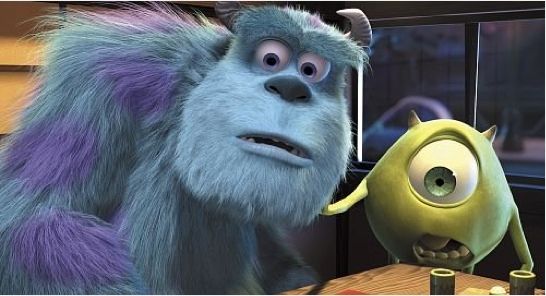4 Secrets of Creativity from Pixar's President

SAN DIEGO — If anyone knows about creativity, it's Ed Catmull. The president of Pixar and Walt Disney Animation Studios in Emeryville, Calif., has spent a lifetime bringing richly imaginative stories to life on the silver screen, from "Toy Story" to "Wall-E."
"I believe everyone has the potential to be creative," Catmull told a packed audience of neuroscientists here Sunday (Nov. 10) at the annual meeting of the Society for Neuroscience. A leader's job, he said, is to remove the blocks that stifle creativity.
Catmull is a pioneer in computer graphics, with extensive experience managing creative groups. His personal trajectory took him from graduate school in computer science, to working for George Lucas, to leading Pixar and Disney animation.
The computer animation visionary emphasized four points for fostering creativity: encouraging honesty, making mistakes, protecting the new and acknowledging the unknown. [Creative Genius: The World's Greatest Minds]
1. Encouraging honesty: When a group of people is doing something new, it's important to provide an environment where it's safe to be candid, Catmull said. People are dishonest for a variety of reasons, including politeness, respect for superiors and fear of embarrassment, he said. At most companies, managers don't foster a safe culture for employees to be completely honest, Catmull said. By doing this, "they accidentally alter access to the truth."
2. Making mistakes: Catmull stresses the importance of making the right kind of mistakes. "Right now it's popular to say that it's important to fail," the Pixar president said. The problem is, there are two meanings to the word failure. There's the academic meaning — where you try something, it doesn't work, and you learn from the experience — which is the kind of failure you want. And then there's the failure that has higher stakes.
In the airplane industry or in medicine, for example, there's no tolerance for error. But in the creative world, where the goal is to, say, make a good movie, that intolerance wouldn't work. "Our job isn't to prevent errors," Catmull said. "It's to respond when things go wrong."
Sign up for the Live Science daily newsletter now
Get the world’s most fascinating discoveries delivered straight to your inbox.
3. Protecting the new: For Catmull, being creative also means "protecting the new." When you're doing something new, you don't always know it's going to work or how it will be relevant to the job you're doing, but it's important to prevent the new approach from being dismissed, he said. At Pixar, about 300 people work on each movie. The creative team brings their ideas to the production team, which carries out the creative vision by mocking up the filmin the most efficient way. But when that efficiency gets applied to the creative side, it doesn't work, Catmull said. This happened at Disney animation studios, when the quality of movies started to fall, he said.
4. Acknowledging the unknown: Finally, there's the side of creative success that is hidden from people, Catmull said — what former U.S. Defense Secretary Donald Rumsfeld called the "unknown unknowns," though he likely wasn't talking about a creative process. The world contains enormous complexity and randomness. The things humans can't see are far more important than the ones they can predict, Catmull said.
When Catmull was 12 years old, his family was driving on a steep mountain road in Yellowstone National Park, when another car collided with theirs. If the cars had been 2 inches closer together, Catmull's family would have gone off a cliff. "Two more inches, and no more Pixar," he said. There are so many "2 inch" events we don't even know about, he said.
Creativity can be thought of as a door between two worlds. One side contains everything known, such as the laws of physics. The other side contains the unknown.
"In the creative world, we have to have a foot in both," Catmull said.
Follow Tanya Lewis on Twitter and Google+. Follow us @livescience, Facebook & Google+. Original article on LiveScience.












